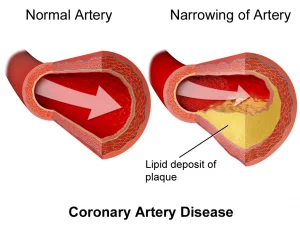[et_pb_section bb_built=”1″ fullwidth=”on” specialty=”off” parallax_method=”off” custom_padding_tablet=”50px|0|50px|0″ custom_padding_last_edited=”on|desktop” _builder_version=”3.0.92″ custom_padding_phone=”20px|0px|0px|0px” next_background_color=”#000000″ global_module=”106″][et_pb_fullwidth_post_title global_parent=”106″ title=”on” meta=”off” author=”on” date=”on” categories=”on” comments=”on” featured_image=”off” featured_placement=”below” parallax_method=”off” text_color=”dark” text_background=”off” use_border_color=”on” title_font_size=”46px” custom_padding=”80px||50px|” custom_padding_last_edited=”on|phone” title_font_size_phone=”32px” title_font_size_last_edited=”on|phone” parallax=”on” background_color=”rgba(255,255,255,0)” border_color_all=”#c6c6c6″ _builder_version=”3.0.92″ border_width_bottom=”1px” custom_padding_tablet=”30px||20px|” custom_padding_phone=”0px||20px|” /][/et_pb_section][et_pb_section bb_built=”1″ fullwidth=”off” specialty=”on” prev_background_color=”#000000″ next_background_color=”#ff0000″][et_pb_column type=”3_4″ specialty_columns=”3″][et_pb_row_inner admin_label=”Row”][et_pb_column_inner type=”4_4″ saved_specialty_column_type=”3_4″][et_pb_text]
Coronary Artery Disease (CAD) is a heart disease that results from the damage or infection of coronary arteries. Coronary arteries are the main blood vessels that nourish the heart by supplying it with blood, oxygen, and nutrients.
Usually, damaged blood vessels are caused by a buildup of plaque (cholesterol-containing deposits) on artery walls. Inflammation is also a major cause of CAD.
When plaque builds up or blood vessels swell, arteries narrow and the flow of blood to the heart is obstructed. This condition is called ischemia. With time, limited blood flow may cause a patient to experience shortness of breath, chest pain, and other related symptoms.
Is CAD the same as Coronary Heart Disease?
Although sometimes used interchangeably, CAD and Coronary Heart Disease (CHD) aren’t the same condition. However, CHD may be a result of CAD. A complete blockage of the artery may even lead to a heart attack.
What are the risk factors for Coronary Artery Disease?
- Age: The buildup of plaque begins in childhood and deposits grow over time. The older you get, the higher the chances that your coronary arteries are narrowing and becoming damaged.
- Gender: Generally, the risk for CAD is higher in men than in women, whose risk increases after menopause.
- Family history: Families with a history of heart disease are considered to be at a higher risk. If your brother or father was diagnosed with heart disease before the age of 55 or your sister or mother gets the same diagnosis before the age of 65, you have a high risk of developing CAD.
- Smoking: Both smoking and secondhand smoke increases the risk of developing CAD.
- High blood pressure: When not controlled, high blood pressure may cause the coronary arteries to harden and grow thicker, ultimately constricting them.
- High cholesterol levels: A high level of cholesterol in the blood increases the risk of plaque and atherosclerosis. This increase in cholesterol levels may result from a high level of Low-Density Lipoprotein (LDL), also referred to as bad cholesterol. A low level of High-Density Lipoprotein (HDL), or good cholesterol, suggests atherosclerosis.
- Diabetes is generally associated with an increased risk of CAD.
Other risk factors include obesity, high stress levels, and insufficient physical activity. Ongoing research seeks to identify other possible risk factors such as sleep apnea, high triglycerides, homocysteine, and high sensitivity C-reactive protein (hs-CRP).
CAD has several risk factors. Some you can control. By taking the necessary steps and adjustments, you can significantly reduce your risk of developing CAD.
What are the signs and symptoms for CAD?
When your coronary arteries are narrowed, it’s difficult to supply enough nourishment to the heart, especially when exercising.
At first, the decrease in the amount of oxygen, blood, and nutrients to the heart may not be noticeable. But when there’s significant plaque buildup, you may experience the following symptoms.
- Chest pain: You feel a lot of pressure or tightness in the middle or on the left side of your chest. This pain is also known as angina and is typically triggered by emotional or physical stress. After stopping the stress-inducing activity, you’ll feel the pain go away.
- Shortness of breath: Because the heart isn’t pumping enough blood for your body’s needs, you may experience shortness of breath or fatigue.
- Heart attack: When a coronary artery is completely blocked a heart attack may result. Signs of an impending heart attack include extreme pressure in the chest, pain in the shoulder or arm, and sometimes sweating and shortness of breath.
Women may experience less obvious signs such as pain in the neck or jaw. Sometimes, heart attacks may occur without any apparent warning signs.
How is CAD diagnosed?
Your doctor will diagnose CAD based on your family and medical history, risk factors, physical exam, and results from other tests.
CAD cannot be diagnosed by a single test. If your doctor suspects CAD, they may advise you to take one or more of the following tests:
- ECD or EKG (electrocardiogram)
Measures your heart rate, electrical activity, and the regularity of your heartbeat.
Uses ultrasound to develop a picture of your heart.
Helps determine your heart’s condition when it’s under stress.
Develops a picture of your heart, lungs and other organs using X-rays.
Helps determine if there’s blockage in your arteries. This involves inserting a thin and flexible tube or injecting a dye into the coronary arteries.
Catch CAD before it gets worse
CAD often develops over time. Because of this, you might not notice any problem until there’s significant blockage or even a heart attack. But there’s a lot you can do to reduce the chances of it happening. Leading a healthy lifestyle is a great start. Regular checkups are also important, to know where you stand.
If you have concerns and would like to learn if Coronary Artery Disease may affect you, please schedule a consultation with the specialists at Manhattan Cardiology.
[/et_pb_text][/et_pb_column_inner][/et_pb_row_inner][/et_pb_column][et_pb_column type=”1_4″][et_pb_sidebar saved_tabs=”all” orientation=”right” area=”sidebar-1″ background_layout=”light” remove_border=”off” global_module=”112″ show_border=”on” /][/et_pb_column][/et_pb_section][et_pb_section bb_built=”1″ specialty=”off” _builder_version=”3.4.1″ background_color=”#ff0000″ custom_padding=”27px||27px|” border_color_all=”#ff0000″ prev_background_color=”#ffffff” global_module=”147″][et_pb_row global_parent=”147″ _builder_version=”3.0.106″ custom_margin=”||0px|” custom_padding=”||0px|”][et_pb_column type=”4_4″][et_pb_text global_parent=”147″ _builder_version=”3.4.1″ text_orientation=”center” header_text_align=”left” header_3_font_size=”36px” header_3_text_color=”#ffffff” background_layout=”dark”]
Schedule Your Appointment Today
[/et_pb_text][/et_pb_column][/et_pb_row][et_pb_row global_parent=”147″ background_position=”top_left” background_repeat=”repeat” background_size=”initial”][et_pb_column type=”4_4″][et_pb_button admin_label=”Book an Appointment” global_parent=”147″ _builder_version=”3.4.1″ button_text=”Book an Appointment” button_url=”https://momnyc.myezyaccess.com/ezbooking?t=Pnz3FDH9hx4=” button_alignment=”center” disabled_on=”||off” disabled=”off” button_text_color=”#ffffff” button_bg_color=”#4d4d4d” button_border_color=”#4d4d4d” custom_button=”on” button_font=”|600|||||||” button_icon_color=”#ffffff” button_bg_color_hover=”rgba(77,77,77,0.85)” /][/et_pb_column][/et_pb_row][/et_pb_section]



